I’ve started work on Hobbyboss’ F3H-2 Demon kit. The Demon was McDonnell’s third naval fighter. While an interesting design that did serve in the fleet for a few years, it never lived up to expectations, due to it not having an engine that was quite up to the task of giving it Mach 1+ capability. But all was not lost – this design eventually led to McDonnell’s next naval fighter, the F4H, which we know today as the F-4 Phantom II.

Out of the box the cockpit parts build up into a decent looking assembly. The side panels are nicely detailed, with plenty of relief cast in to accept painted detail, drybrushing, and washing. While the kit seat looks nice, I chose to replace it with a True Details resin version. The kit does come with a photoetch fret, but oddly, no belts are included. As the resin seat is a drop fit replacement – and has belts cast in – I went with that option.
One note about the seat, if you have an AMS (Advanced Modeling Syndrome) bent… the Demon was originally fitted with a seat of McDonnell design, and later a Martin Baker MB5. Based on some reading I did, anything produced after November 1959 (if I recall correctly) would have had the MB5, and any previously built -2 or -2N model may have had it retrofitted later. The -2M would have had the McDonnel seat for the life of the airframe.
I gave everything a coat of Badger Stynylrez Black Primer, and then a coat of Tamiya XF-66 to the cockpit interior parts. The seat was painted in Tamiya XF-69, as was the instrument panel and coaming. I drybrushed all the parts in Vallejo Model Color Sky Gray, and then picked out all the details with Citadel’s Screaming Skull. I like to base all the knobs and switches in a cockpit with a light color, so that subsequent colors such as red, yellow, white, etc., will pop a bit more.
Various parts were given applications of red, yellow, and white, all from Vallejo’s Model Color range. The -2 and -2N Demon had large, orange-ish radar scopes. I wanted to make sure that was really a focal point of the instrument panel, so I first applied a drop of Screaming Skull to lighten it up, and then a drop of Ammo’s Metallic Orange.
The seat was heavily drybrushed with the Vallejo Sky Gray, and I tried to do a bit of combined seat wear and spotlighting in the seat pan. The headrest was painted with Vallejo’s Mecha Color Dark Red, the belts with Vallejo Model Color Iraqi Sand, and the buckles with Citadel’s Leadbelcher.
Everything was then given a coat of Future for a gloss coat, a wash with Ammo’s Deep Brown Panel Line Wash, and then a coat of Ultra Matte Varnish to dull it all down again.
While the cockpit certainly won’t win any awards for engineering (or for my painting, for that matter), it is nice enough to work for most modelers. While there are many aftermarket sets available, I found that to fit in my limited modeling budget, a simple seat replacement suited me.
Next up in the build will be closing up the fuselage, getting the wings and tailplanes on, and priming it all.
And don’t forget the nose weight!
NOTE: In a later blog post, I’ll be covering how to know which Hobbyboss kit to purchase for the version of the Demon you’d like to make. Their boxes are labeled incorrectly!

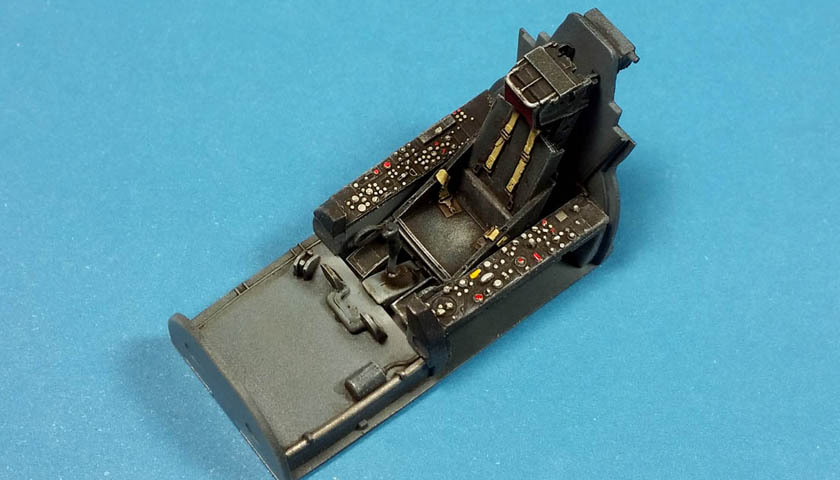
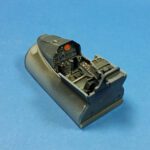
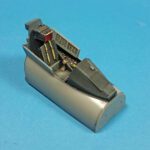
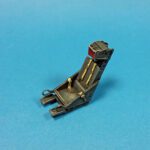
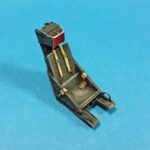
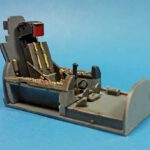
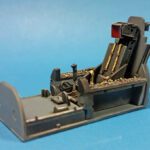
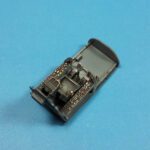
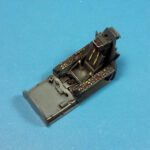
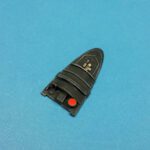
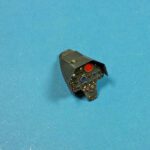
Leave a Reply